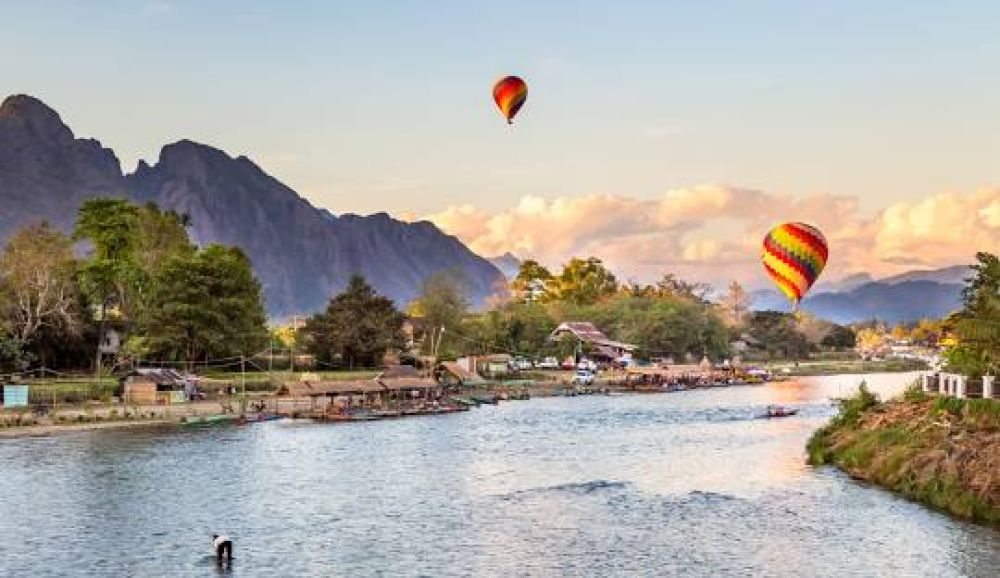

The story of tourism in Vang Vieng is a compelling chapter in the history of Laos. This small town, nestled in the scenic karst landscape along the Nam Song River, has undergone a remarkable transformation from a tranquil fishing village to a bustling tourist hotspot.
Initially, Vang Vieng was simply a stopover for travelers making the overland trip between Vientiane, the capital of Laos, and the UNESCO World Heritage city of Luang Prabang. Its tourism industry began to bloom in the mid-1990s when backpackers started to discover its breathtaking natural beauty. The ethereal limestone mountains, lush rice fields, and the serene river quickly turned Vang Vieng into a must-visit destination for adventure-seeking travelers.
Into the 2000s, Vang Vieng’s reputation flourished as an adventure tourism hub. Activities like river tubing, rock climbing, caving, and kayaking attracted visitors from all over the globe, eager for an adrenaline rush amidst an idyllic backdrop. Eco-tourism initiatives also started taking root, with local entrepreneurs recognizing the importance of sustainable practices to preserve the environment that was drawing tourists in the first place.
However, the town's popularity led to unplanned growth and an infamous party scene, which peaked around the early 2010s. This prompted the Laotian government to step in to curb the unsafe activities that were marring Vang Vieng's reputation and ecosystem. As a result, the government shut down numerous riverside bars and began stricter enforcement of safety regulations for tourists.
Today, Vang Vieng has transformed once again. It has embraced a more sustainable tourism model, promoting cultural experiences, eco-friendly tours, and community-based tourism. Visitors can now immerse themselves in Laotian culture by participating in traditional weaving or cooking classes, enjoying local Lao cuisine, or staying in eco-lodges run by local families.
Adventure and Wellness Retreats: Recent trends show a rise in wellness and adventure retreats that offer a blend of physical activities, cultural interaction, and health-focused amenities.
Boutique Accommodations: There has been a noticeable shift toward boutique hotels and resorts that reflect local architecture and offer personalized experiences in harmony with the natural environment.
Digital Nomadism: Vang Viendjfgnfg is also becoming a haven for digital nomads who are attracted to its stunning landscapes and relaxed way of life, prompting the development of co-working spaces and services geared towards long-term travelers.
With a renewed focus on conscious travel and cultural respect, Vang Vieng is poised to provide a unique and captivating experience for all visitors, leading the way in responsible and immersive tourism in Laos.